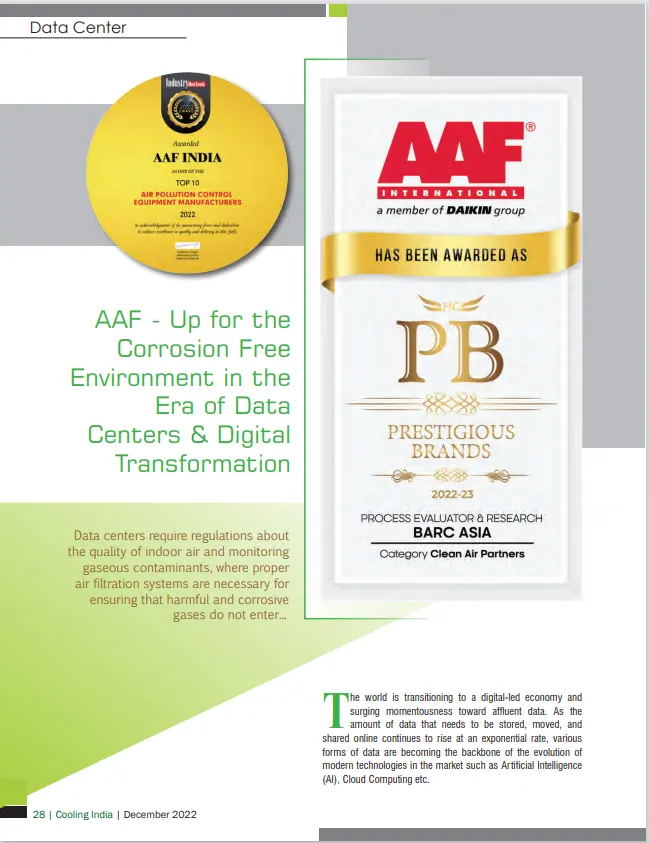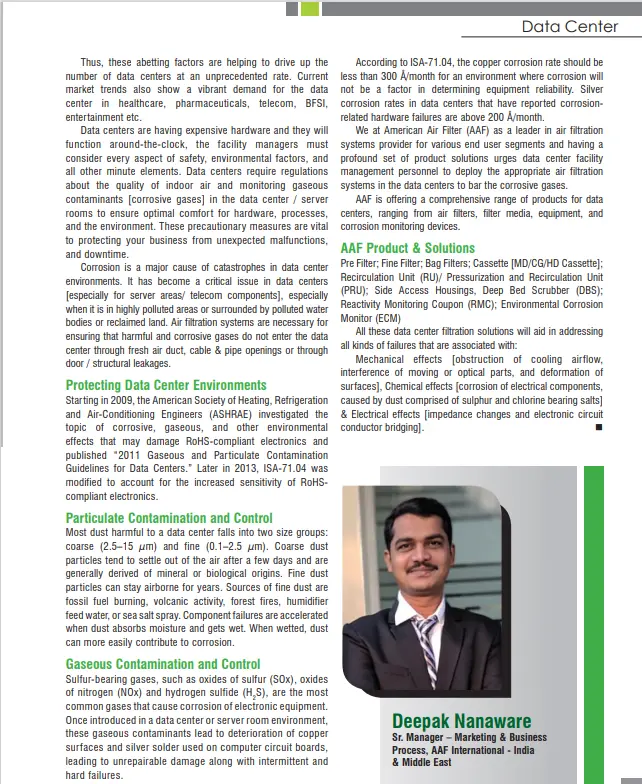Protecting Data Center Environments
AAF – Up for the Corrosion Free Environment in the Era of Data Centers & Digital Transformation
The world is transitioning to a digital-led economy and surging momentousness toward affluent data. As the amount of data that needs to be stored, moved, and shared online continues to rise at an exponential rate, various forms of data are becoming the backbone of the evolution of modern technologies in the market such as Artificial Intelligence (AI), Cloud Computing etc.
Thus, these abetting factors are helping to drive up the number of data centers at an unprecedented rate. Current market trends also show a vibrant demand for the data center in healthcare, pharmaceuticals, telecom, BFSI, entertainment etc.
Data centers are having expensive hardware and they will function around-the-clock, the facility managers must consider every aspect of safety, environmental factors, and all other minute elements. Data centers require regulations about the quality of indoor air and monitoring gaseous contaminants [corrosive gases] in the data center / server rooms to ensure optimal comfort for hardware, processes, and the environment. These precautionary measures are vital to protecting your business from unexpected malfunctions, and downtime.
Corrosion is a major cause of catastrophes in data center environments. It has become a critical issue in data centers [especially for server areas/ telecom components], especially when it is in highly polluted areas or surrounded by polluted water bodies or reclaimed land. Air filtration systems are necessary for ensuring that harmful and corrosive gases do not enter the data center through fresh air duct, cable & pipe openings or through door / structural leakages.
Starting in 2009, the American Society of Heating, Refrigeration and Air-Conditioning Engineers (ASHRAE) investigated the topic of corrosive, gaseous, and other environmental effects that may damage RoHS-compliant electronics and published “2011 Gaseous and Particulate Contamination Guidelines for Data Centers.” Later in 2013, ISA-71.04 was modified to account for the increased sensitivity of RoHS[1]compliant electronics.
Particulate Contamination and Control
Most dust harmful to a data center falls into two size groups: coarse (2.5–15 μm) and fine (0.1–2.5 μm). Coarse dust particles tend to settle out of the air after a few days and are generally derived of mineral or biological origins. Fine dust particles can stay airborne for years. Sources of fine dust are fossil fuel burning, volcanic activity, forest fires, humidifier feed water, or sea salt spray. Component failures are accelerated when dust absorbs moisture and gets wet. When wetted, dust can more easily contribute to corrosion.
Gaseous Contamination and Control
Sulfur-bearing gases, such as oxides of sulfur (SOx), oxides of nitrogen (NOx) and hydrogen sulfide (H2 S), are the most common gases that cause corrosion of electronic equipment. Once introduced in a data center or server room environment, these gaseous contaminants lead to deterioration of copper surfaces and silver solder used on computer circuit boards, leading to unrepairable damage along with intermittent and hard failures.
According to ISA-71.04, the copper corrosion rate should be less than 300 Å/month for an environment where corrosion will not be a factor in determining equipment reliability. Silver corrosion rates in data centers that have reported corrosion[1]related hardware failures are above 200 Å/month.
We at American Air Filter (AAF) as a leader in air filtration systems provider for various end user segments and having a profound set of product solutions urges data center facility management personnel to deploy the appropriate air filtration systems in the data centers to bar the corrosive gases.
AAF is offering a comprehensive range of products for data centers, ranging from air filters, filter media, equipment, and corrosion monitoring devices.
AAF Product & Solutions
Pre Filter; Fine Filter; Bag Filters; Cassette [MD/CG/HD Cassette]; Recirculation Unit (RU)/ Pressurization and Recirculation Unit (PRU); Side Access Housings, Deep Bed Scrubber (DBS); Reactivity Monitoring Coupon (RMC); Environmental Corrosion Monitor (ECM).
All these data center filtration solutions will aid in addressing all kinds of failures that are associated with:
Mechanical effects [obstruction of cooling airflow, interference of moving or optical parts, and deformation of surfaces], Chemical effects [corrosion of electrical components, caused by dust comprised of sulphur and chlorine bearing salts] & Electrical effects [impedance changes and electronic circuit conductor bridging]



